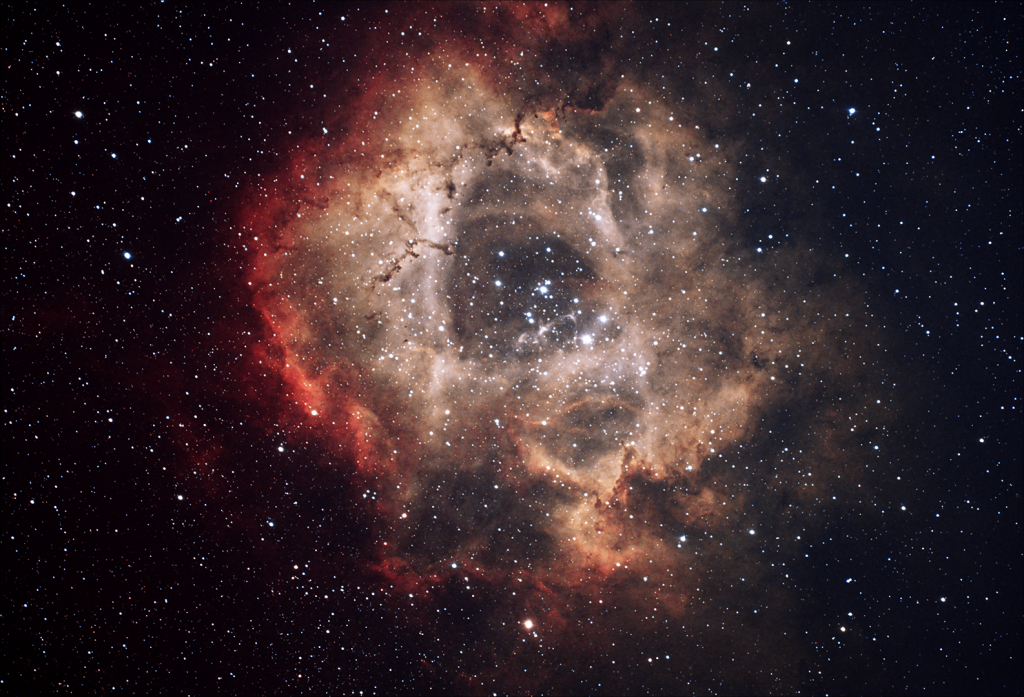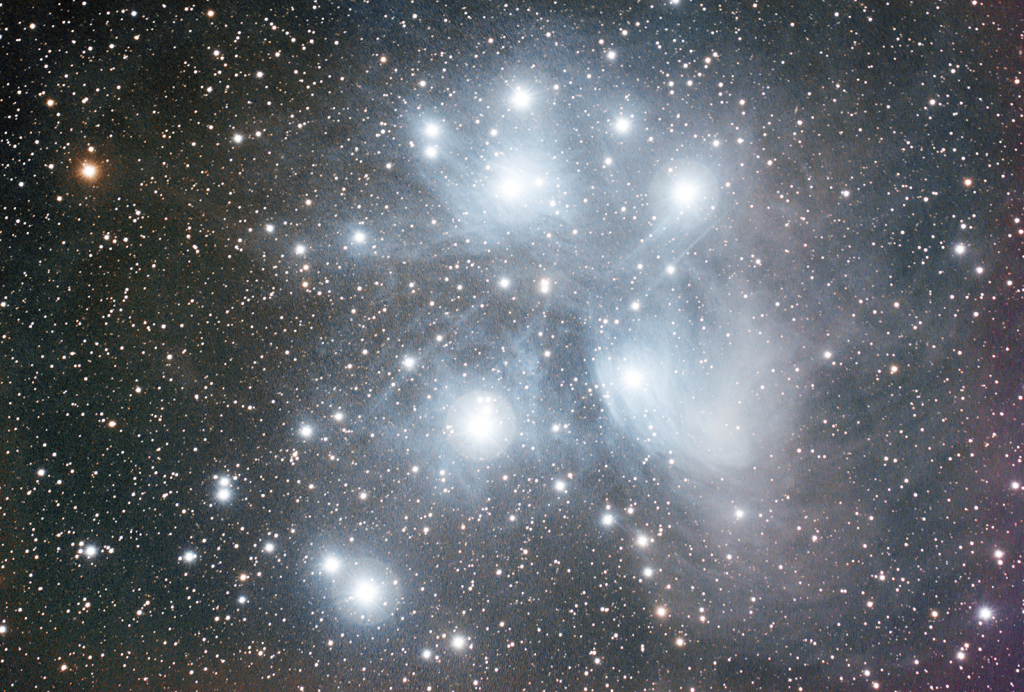
This is the Rosette Nebula in the constellation of Monoceros. It is a so-called HII region, the stars inside the nebula are exciting the hydrogen causing it to glow on its own (as opposed to a reflection nebula that, well, reflects the light that hits it). It is about 5000 light years away, about 130 light years across, and about a degree of arc across from where we live. The Moon is about a half a degree across. I shot this Christmas night at the River Ridge Observatory with my 11″ SCT and Hyperstar shooting at f/1.9 and ZWO ASI294MC Pro camera. Since the Moon was 81% illuminated, I used an L-eNhance dual narrowband filter which lets just two narrow bands of light through to somewhat negate the Moon’s impact. This was made from 14 separate five minute subs for a total of 70 minutes. You might be able to a gradient horizontally. That may be from the Moon and I had to work to remove it.


